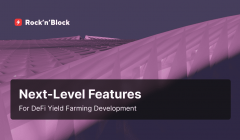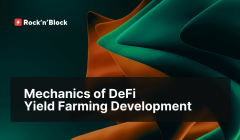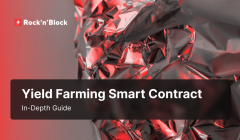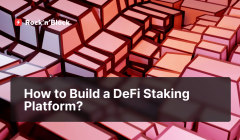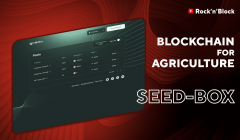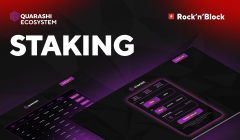What Is DeFi Staking Platform Development?
03 May 2024The concept of staking platforms has emerged as a cornerstone for crypto projects aiming to innovate and engage users effectively. This comprehensive guide dives deep into the multifaceted world of DeFi staking platform development. From understanding the fundamentals of these platforms to exploring their key features and operational mechanisms, this article provides invaluable insights for crypto projects looking to harness the power of staking. We'll delve into the benefits of DeFi staking platform development, compare staking with farming, and examine essential factors to consider during the development process.
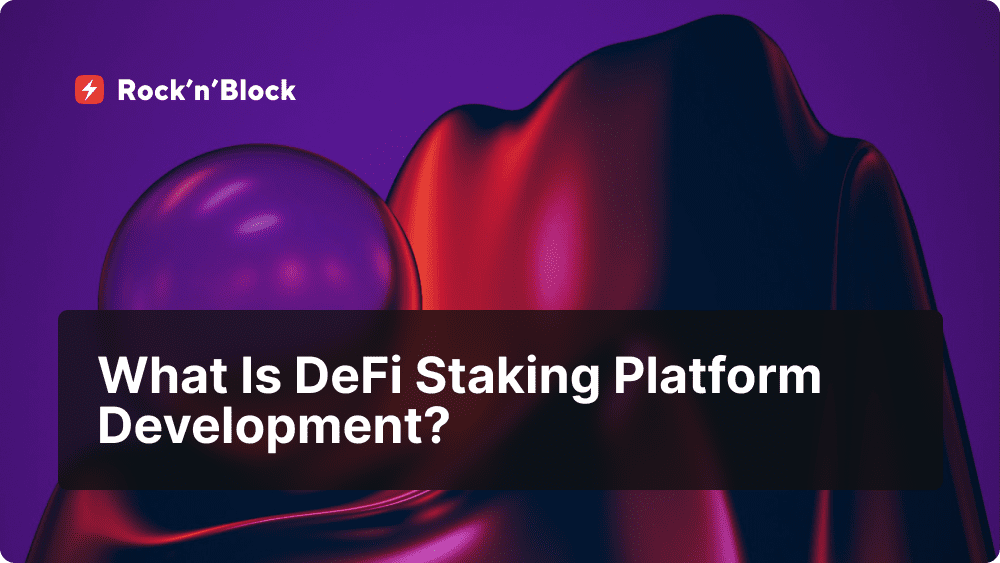
Table of Contents:
-
What are DeFi Staking Platforms?
-
Key Features of DeFi Staking Platforms
-
How DeFi Staking Platforms Work
-
Benefits of DeFi Staking Platform Development for Crypto Projects
-
Staking vs. Farming: Understanding the Difference
-
Factors to Consider in DeFi Staking Platform Development
-
The Future of DeFi Staking Platforms
What are DeFi Staking Platforms?
A DeFi staking platform is a decentralized platform providing users the ability to lock up their cryptocurrency assets for a specified period in exchange for rewards. It helps projects incentivize long-term commitment from token holders.
By participating in staking, users contribute to the platform's token supply dynamics while earning rewards based on the amount of assets they stake. By engaging in staking, users actively contribute to the network's integrity and resilience while potentially increasing their holdings through earned rewards. This system not only incentivizes long-term asset retention but also bolsters the overall functionality and sustainability of the platform.
Key Features of DeFi Staking Platforms
Understanding the key features of DeFi staking platforms is paramount. In this article, we delve into the essential components that define and drive the success of DeFi staking platform development.
Secure Smart Contracts
At the heart of any DeFi staking platform lies smart contracts development. These contracts govern the staking process, reward distribution, and other protocol functionalities. Ensuring the security and robustness of smart contracts is non-negotiable, as any vulnerabilities or exploits could lead to significant financial losses for users and tarnish the platform's reputation. Comprehensive code audits, rigorous testing, and ongoing security audits are essential to mitigate risks and instill trust among stakeholders.
Intuitive User Experience
User experience (UX) plays a pivotal role in the adoption and retention of DeFi staking platforms. From onboarding new users to managing staking activities and monitoring rewards, the platform's interface should be intuitive, responsive, and aesthetically pleasing. Clear and concise instructions, real-time updates, and seamless navigation enhance user engagement and satisfaction, ultimately driving platform growth and community participation.
Flexible Staking Options
Flexibility in staking options is crucial in DeFi staking platform development to accommodate the diverse needs and preferences of users. DeFi staking platforms should support various staking durations, minimum staking amounts, and reward structures to cater to both casual stakers and institutional investors. Additionally, the ability to unstake tokens or adjust staking parameters should be easily accessible, empowering users to manage their assets efficiently and capitalize on market opportunities.
Sustainable Tokenomics Model
A sustainable tokenomics model is essential to incentivize participation, maintain token value, and ensure the long-term viability of the DeFi staking platform. Balancing staking rewards, inflation rates, and token issuance mechanisms requires careful economic modeling and analysis. Token utility and scarcity should be carefully considered to align incentives among stakeholders and promote healthy ecosystem growth.
Interoperability and Integration
In an increasingly interconnected DeFi ecosystem, interoperability and integration capabilities are paramount for DeFi staking platform development. Seamless integration with other DeFi protocols, decentralized exchanges, and liquidity pools enhances liquidity, accessibility, and utility for users. Additionally, interoperable standards such as ERC-20 and ERC-721 facilitate the seamless transfer and utilization of staked assets across different platforms, unlocking new opportunities for innovation and collaboration.
Deposits and Withdrawals
Deposits and withdrawals are essential to any DeFi staking platform, as they form the foundation of user interaction. Users expect a seamless transactional experience that is swift and hassle-free. This includes the ability to deposit tokens for staking and to withdraw them effortlessly whenever they choose to disengage from staking activities. In addition, disclosing associated fees transparently ensures that users are fully informed about the cost implications of their transactions upfront, promoting trust and clarity.
Crypto Wallet Integration
Integration with cryptocurrency wallets represents a critical bridge between users and the staking platform, facilitating secure access to staked assets. Offering support for a diverse array of wallets, from hardware and mobile to browser extensions, caters to the varied preferences of users. By enabling seamless connectivity between the staking platform and users' wallets, one-click authorization of transactions becomes a reality, streamlining user interactions and enhancing accessibility.
Reports
Comprehensive reporting capabilities empower users with valuable insights into their staking activities, enabling informed decision-making and performance monitoring. Detailed reports and analytics tools provide visibility into staking performance, rewards distribution, historical data, and trend analysis. Customizable dashboards further enhance user experience, allowing individuals to tailor reporting preferences and track key metrics relevant to their staking endeavors. Additionally, export functionality for reports facilitates data analysis or reporting purposes, empowering users with flexibility and control over their staking information.
Rewards Calculator
An interactive rewards calculator serves as a valuable tool for users to estimate potential earnings based on various staking parameters. Users can use scenario planning to explore different staking options and understand how adjustments to parameters can affect their rewards. Real-time updates ensure that users have access to accurate and up-to-date information, enhancing their ability to make informed decisions regarding their staking activities.
Re-Stake Features
Staking platform development features encompass various functionalities tailored to optimize user experience and maximize returns. Auto-compounding ensures that earned rewards are seamlessly reinvested into the staking program, enhancing efficiency and bolstering long-term gains. Users can customize the compounding frequency to align with their investment goals, offering flexibility and control. Additionally, fee optimization minimizes transaction costs associated with compounding activities, ensuring cost-effectiveness and competitiveness in the creation of staking platforms.
Entry/Exit Policies and Penalties
In DeFi staking platform development, flexible entry and exit points provide users with customizable participation options, facilitating adjustments based on preferences and market conditions. Tiered access levels provide varying privileges based on participation, fostering inclusivity and rewarding engagement. Early withdrawal penalties discourage premature exits, promoting sustained commitment and ecosystem stability. Lock-up periods require minimum staking durations, encouraging long-term participation and reducing volatility. Maximum withdrawal limits manage liquidity and stability by preventing sudden disruptions. Minimum deposit requirements establish engagement baselines, nurturing a vibrant community.
How DeFi Staking Platforms Work
DeFi staking platform development has become a crucial aspect for crypto projects looking to enhance their ecosystem. But how exactly do DeFi staking platforms work? In this section, we'll walk you through the step-by-step process of how these platforms operate and provide insight into their underlying mechanisms, empowering you to understand and engage with DeFi staking with confidence.
Step 1: Connecting a Wallet
The journey begins with a user connecting their cryptocurrency wallet to a DeFi staking platform. This wallet serves as the gateway through which users can access and manage their digital assets. Whether it's a hardware wallet, software wallet, or browser extension, a user must authenticate and authorize the connection to a staking platform, ensuring secure and seamless access to their funds.
Step 2: Choosing a Staking Asset
Once the wallet is connected, users are presented with a selection of staking assets supported by a platform. Users can choose the asset they wish to stake based on factors such as potential rewards, staking requirements, and personal investment strategies.
Step 3: Staking Tokens
With the staking asset selected, users proceed to stake their tokens on a DeFi staking platform. This involves locking up a specified amount of the chosen cryptocurrency within a platform's smart contract.
Step 4: Earning Rewards
As a reward for their participation in staking, users receive additional tokens periodically, typically in the same cryptocurrency they staked. The amount of rewards earned depends on various factors, including the duration of staking and the amount of tokens staked.
Step 5: Monitor and Manage Staking Activities
Throughout the staking period, users can monitor and manage their staking activities through a DeFi staking platform's user interface. This includes tracking staking rewards, monitoring staking performance, and adjusting staking parameters as needed. Users have the flexibility to unstake their tokens or adjust staking parameters at any time, providing them with control over their staking activities and investment strategies.
Step 6: Withdraw the Staked Tokens
After the staking period is over or whenever the user chooses to disengage from staking, they can withdraw their staked tokens from the platform. This process involves unlocking the staked tokens from a platform's smart contract and transferring them back to the user's wallet. Once the tokens are successfully withdrawn, users regain full control and ownership of their assets.
Benefits of DeFi Staking Platform Development for Crypto Projects
Enhanced Token Demand and Value
Crypto projects can increase demand and scarcity of their native tokens by offering staking opportunities. Staking incentivizes token holders to lock up their tokens for a specified period, reducing circulating supply and creating scarcity. This, coupled with the utility and benefits offered through staking, enhances the token's attractiveness to investors and strengthens its value proposition in the market.
Community Engagement and Empowerment
DeFi staking platform development fosters community engagement and empowerment, as users become stakeholders in the network's operations and governance processes. By staking their tokens, users actively contribute to networks’ growth and decentralization. This sense of ownership and participation strengthens the project's ecosystem, builds community trust and loyalty, and fosters a collaborative and inclusive community culture.
Differentiation and Competitive Advantage
In a highly competitive market, offering a staking platform sets crypto projects apart and provides a unique value proposition to users. DeFi staking platform development showcases a project's commitment to innovation, decentralization, and community empowerment, distinguishing it from competitors and attracting investors and users seeking opportunities for passive income and participation in decentralized finance. By embracing staking platform development, projects can differentiate themselves in the market and gain a competitive advantage.
Staking vs. Farming: Understanding the Difference
Staking and farming are two popular methods for users to earn rewards and participate in network operations. For crypto projects, understanding the difference between staking platform development and farming platform development is crucial in determining the most suitable strategy for maximizing returns and engaging users within the DeFi ecosystem. This section will explain the differences between staking and farming, providing insights into their unique characteristics to help crypto projects understand them better.
Staking: A Secure and Rewarding Practice
A DeFi staking platform is a decentralized ecosystem where users can lock their cryptocurrency assets for a predetermined period and receive rewards in return. This mechanism regulates token supply dynamics by encouraging users to stake their assets. By participating in staking, users help maintain the platform's health and can earn additional tokens as rewards for their commitment and contribution to the ecosystem.
Farming: Yield Optimization through Liquidity Provision
Yield farming, on the other hand, revolves around providing liquidity to decentralized exchanges or lending protocols in exchange for yield farming rewards. Unlike staking, which involves locking up tokens to support network operations, farming focuses on optimizing yield through liquidity provision. Users deposit their assets into liquidity pools, where they are used to facilitate trades or provide liquidity for lending protocols. In return, farmers receive rewards in the form of trading fees, protocol tokens, and other incentives, which can be significantly higher than traditional staking rewards. Farming offers crypto projects a way to capitalize on trading activity, optimize revenue by providing liquidity, and attract liquidity to their platforms. This deepens liquidity pools, improves market efficiency, and enhances the overall user experience.
Recap of Key Differences
-
Purpose: Staking primarily aims to regulate the token supply and foster user engagement, whereas farming focuses on maximizing yield through liquidity provision and trading activities.
-
Mechanism: Staking involves locking up tokens in a smart contract, while farming involves locking LP tokens, gained by providing liquidity to liquidity pools.
-
Risk Level for Users: Staking is generally considered lower risk as it involves holding assets in a wallet with a known protocol, whereas farming can involve higher risks due to impermanent loss, smart contract vulnerabilities, or protocol changes.
-
Reward Type: Staking rewards typically come in the form of additional tokens of the same cryptocurrency being staked, while farming rewards may include tokens, fees, or interest, varying depending on the platform or protocol.
-
User Engagement: Staking encourages long-term token holding, fostering a loyal and engaged community. In contrast, farming attracts users seeking short-term yield optimization and liquidity provision opportunities, often resulting in higher turnover and less long-term commitment.
In conclusion, staking and farming platforms development offers distinct pathways for crypto projects to engage users, drive growth, and generate yield within the DeFi ecosystem. By understanding the key differences between staking and farming, crypto projects can tailor their strategies to align with their objectives, risk profiles, and user preferences, ultimately driving innovation and growth within the DeFi landscape.
Factors to Consider in DeFi Staking Platform Development
Creating a DeFi staking platform that will be successful requires careful consideration of various factors, spanning technical, economic, and user-centric aspects. In this section, we explore the key considerations that crypto projects must take into account when embarking on DeFi staking platform development.
Security Measures
Ensuring the security and robustness of the staking platform's smart contracts and infrastructure is paramount. Comprehensive code audits, rigorous testing, and ongoing security assessments are essential to mitigate the risk of vulnerabilities, exploits, and attacks. Implementing best practices for secure smart contract development and adhering to industry standards for cybersecurity help safeguard users' funds and instill trust in the platform's integrity and reliability.
Scalability
As the demand for DeFi development services continues to grow, scalability becomes a critical consideration for staking platform development. The platform must be capable of handling increasing transaction volumes, user interactions, and network activity without compromising performance or efficiency. Leveraging scalable blockchain solutions, optimizing gas fees, and implementing layer 2 scaling solutions can help enhance the platform's scalability and accommodate future growth.
Interoperability with Other DeFi Protocols
In an increasingly interconnected DeFi ecosystem, interoperability with other protocols and platforms is essential for DeFi staking platform development. Seamless integration with decentralized exchanges, lending protocols, and other DeFi applications enhances liquidity, accessibility, and utility for users.
The Future of DeFi Staking Platforms
The future of DeFi staking platform development holds great promise for crypto projects. These platforms offer numerous benefits that can push projects forward in the evolving decentralized finance ecosystem. By embracing technological innovation, regulatory compliance, and user-centric design principles, projects can create robust and inclusive staking platforms that empower users to participate in decentralized finance securely and seamlessly. Strategic partnerships and collaborations within the DeFi ecosystem can unlock new opportunities for growth, expansion, and value creation. DeFi staking platform development enables crypto projects to generate revenue, enhance token demand, foster community engagement, and differentiate themselves in a competitive market, positioning them for long-term success and leadership in the evolving landscape of decentralized finance.
We ❤️ Development
Follow us on social media to receive the hottest blockchain development updates
Twitter ⚡️Telegram⚡️LinkedIn⚡️Facebook
